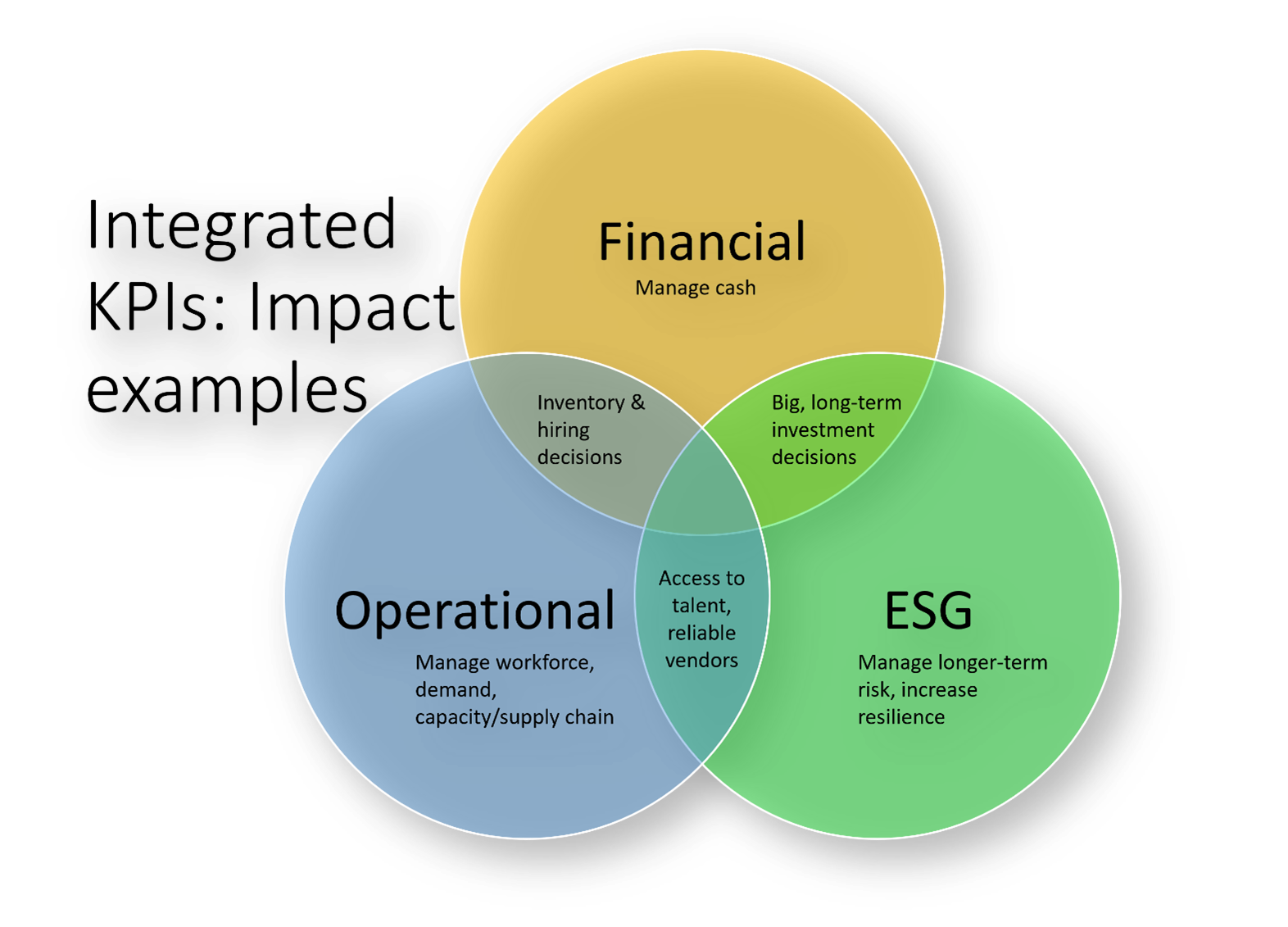Turn Sustainability Hype into Real Benefit
 If you work in Financial Planning & Analysis (FP&A) you regularly use financial metrics or KPIs (Key Performance Indicators) to measure and manage performance. As FP&A extends into xP&A (Extended Planning & Analysis), non-financial operational metrics begin to pop up. This QueBIT blog post provided metrics for Lead Time and Customer Fulfilment (OTIF = “on-time, in-full”, and CFR = “case fill rate”) as just two of many possible examples of these.
If you work in Financial Planning & Analysis (FP&A) you regularly use financial metrics or KPIs (Key Performance Indicators) to measure and manage performance. As FP&A extends into xP&A (Extended Planning & Analysis), non-financial operational metrics begin to pop up. This QueBIT blog post provided metrics for Lead Time and Customer Fulfilment (OTIF = “on-time, in-full”, and CFR = “case fill rate”) as just two of many possible examples of these.
Paying attention to a balanced portfolio of financial and operational metrics and understanding how they affect each other while also comparing your metrics against industry benchmarks goes a long way towards disentangling the effects of skill versus luck. While “luck” is nice, “skill” is what will sustain you when your luck runs out, so it is worth knowing how much of your success (or failure) is due to one or the other.
For instance, cutting costs is one way to make your financial performance look better today, but what if you are not “trimming fat” but shrinking your capacity to meet demand in the long run? Or what if your choice to stick with your lowest-priced supplier exposes you to financially damaging reputational risk when it emerges that they use illegal child labor in developing countries?
It takes extra effort to understand the impact of your short-term cost management decisions on long-term growth and profitability, but that effort helps to close the gap between “trusting to luck” and “being skillful” and reduces business risk.
Integrate Financial, Operational and ESG KPIs
Adding ESG (Environmental, Social and Governance) KPIs to this mix yields an even richer picture. This is a major reason why large institutional investors like Vanguard, State Street and BlackRock have integrated ESG factors into their processes for making investment decisions, and are expecting companies to disclose sustainability data side by side with their financials in order to demonstrate sustainable resilience.
Including ESG and sustainability KPIs with the financial and operational KPIs you already track adds another valuable dimension to your performance management toolset, as illustrated below. With increasing regulation and standardization (for example through SASB), it is becoming easier to make comparisons with other companies for objective feedback that can help you course-correct (if needed) or cement your advantage!

Key Considerations
While it is easy to talk about the benefits of measuring and managing integrated KPIs, the effort to operationalize such an initiative should neither be under-estimated nor be used as an excuse to not begin.
Here are key considerations:
|
Consideration |
Comments |
|
KPI Selection |
Be thoughtful, intentional, and incremental! As a starting point, review KPIs you already report on for regulators and investors and look for any practical opportunities to leverage these to support business operations. Perform an ESG materiality assessment to understand the relative importance of possible KPIs to your organization and business context, and how these would be used in real life. |
|
Data collection & governance |
Develop a strategy for data collection and governance that supports the business need. Data collection is often complicated by data residing in many different systems, and sometimes no system (except perhaps a spreadsheet). Timing differences in when data is available adds additional difficulty. Data governance ensures that once the data has been collected, it can be trusted. With good governance processes in place there is no need to spend additional time on data validation and reconciliation. Data collection and governance should be automated as much as possible to ensure that up-to-date and trustworthy KPIs are always available to support operational decision-making. |
|
Reporting & communication |
Once you have the data and the KPIs are being calculated, there needs to be a way to make it all available across the business. It is important that the dissemination method be appropriate for the audience: while a financial analyst may be happiest exploring the data in an Excel spreadsheet, an executive may prefer an interactive dashboard, while a front-line manager may get most benefit from a daily report via email. If the data is difficult to access it will not be used, and your company will not reap the full benefit of the initiative. |
QueBIT recommends taking an incremental and experimental approach to KPI selection, which gives your organization an opportunity to validate your assumptions about how business operations will engage with this new information.
Meanwhile you can lay strong foundations for your data collection and communication strategy, so that you can easily add or modify data, reports, dashboards, and self-service analytics tools. You can learn more about data collection and reporting in this blog post, or by watching the recording of our webinar How your Existing Planning System can support ESG & Sustainability Reporting.
In Conclusion
Taking a pro-active approach to ESG and sustainability reporting:
- Supports the effort needed to meet regulatory and investor disclosure requirements
- Serves as a tool to examine, analyze, and mitigate long-term risks
- Unearths beneficial operational and strategic opportunities
- Is the first step on the path towards a fully integrated financial, operational and Sustainability Performance Management System that includes what-if scenario analysis, predictive forecasting and cross-functional/holistic long-range strategic planning
Contact QueBIT at info@quebit.com to schedule a conversation on this important topic!